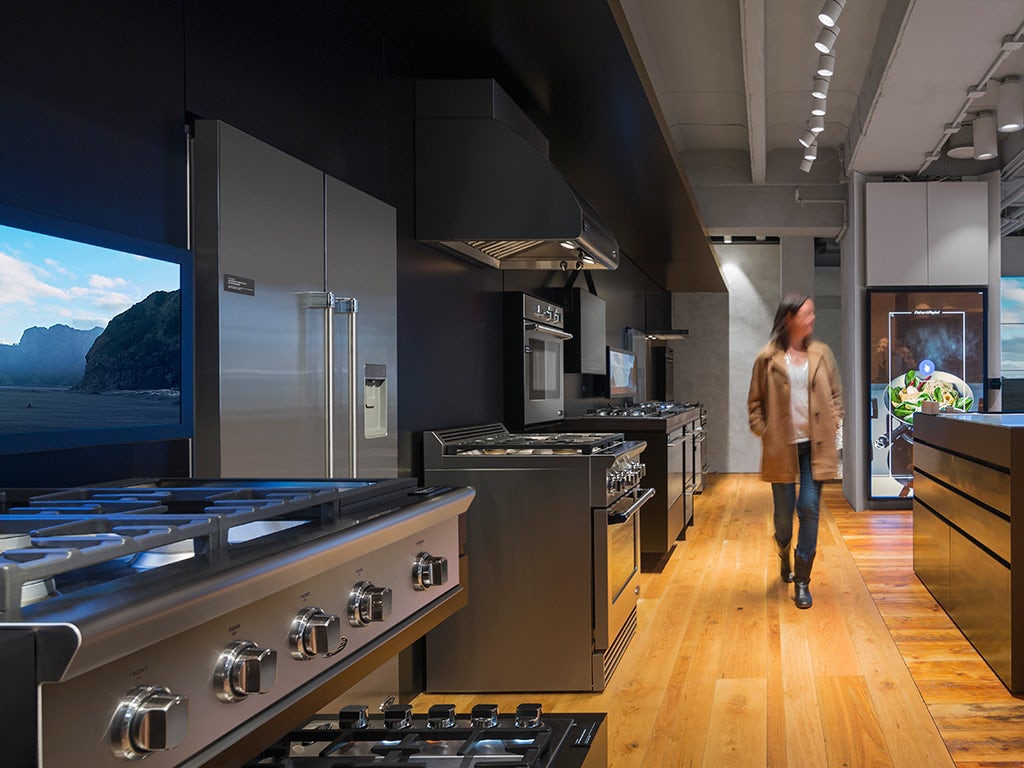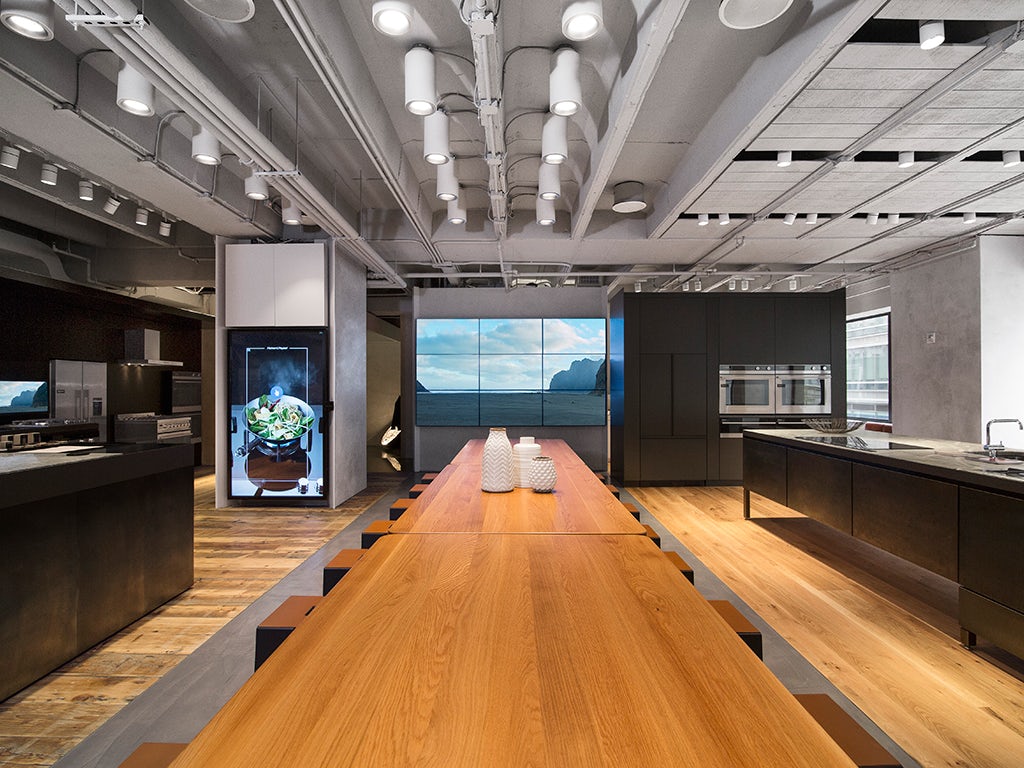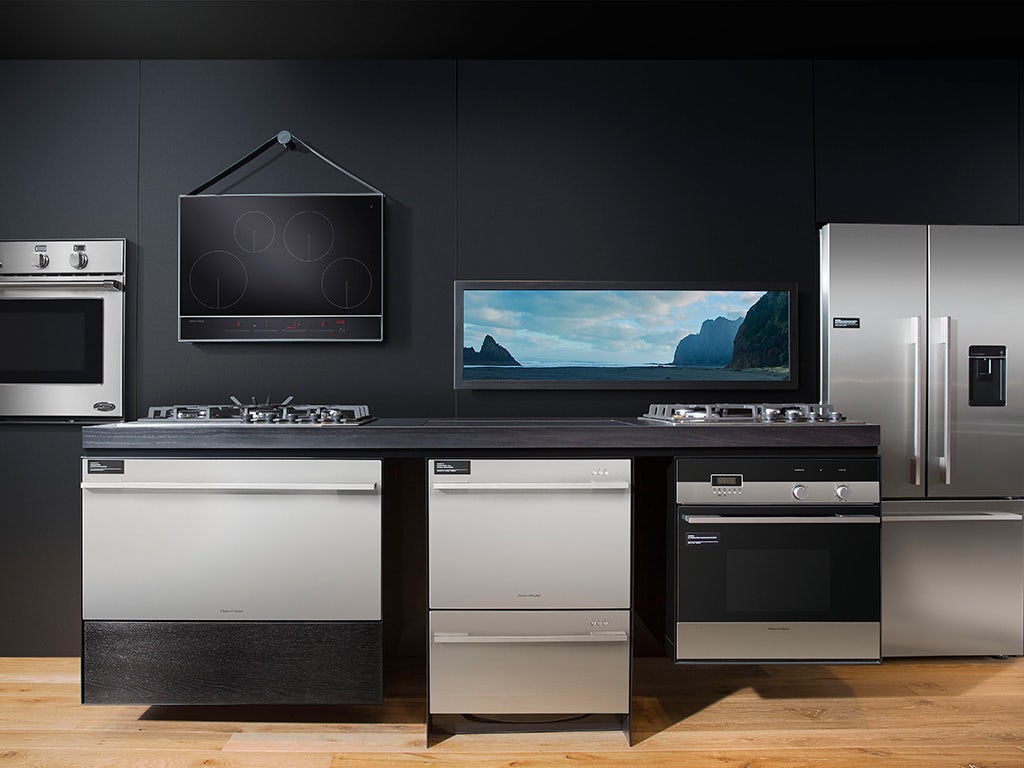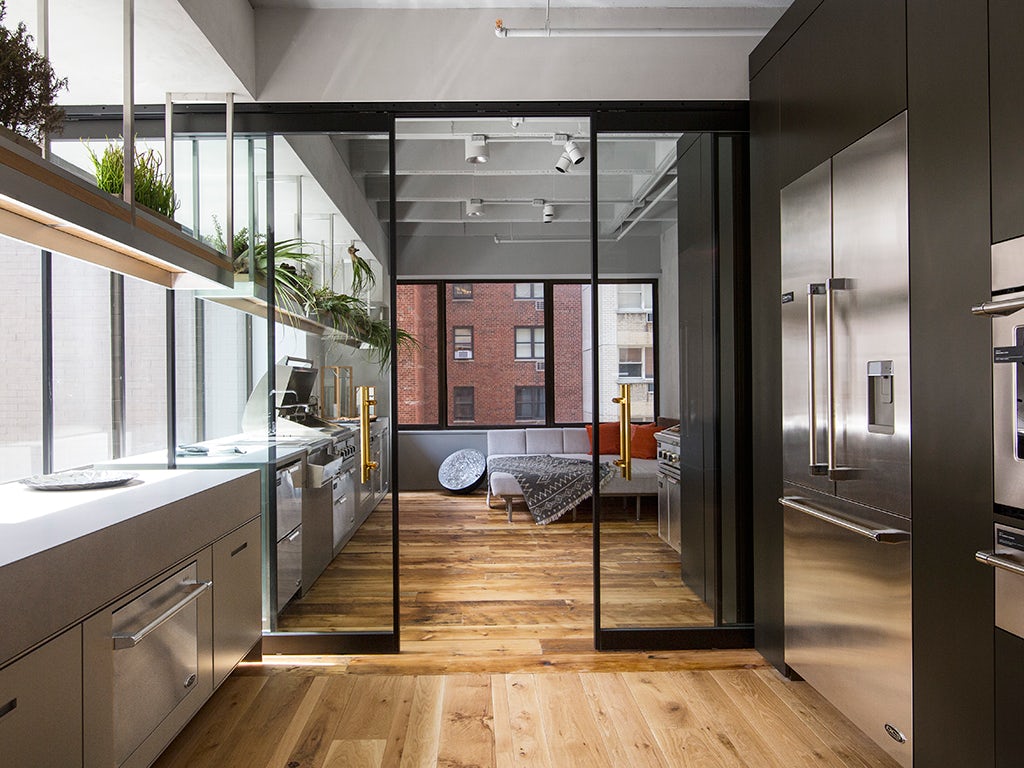A culture of curiosity about people — how they live, where they live, what they do and how they use things — has been driving innovation at Fisher & Paykel since it was founded in 1934. It’s a culture that challenges conventional appliance design and consistently delivers products tailored to human needs. The company’s legacy is about looking to the future, aligning itself to the fundamental principles of sustainable design and committing itself to ongoing research and development. This culture of open innovation allows people to work collaboratively to find insights and ideas that connect with its customers, all while respecting the planet.
Nowhere is the Fisher & Paykel culture more self-evident than at its Experience Center at the A&D Building in Manhattan. Unlike a traditional retail space, it’s an environment conceived as a social space where customers can explore full ranges of premium kitchen appliances and plan their kitchens. The space incorporates New Zealand–inspired elements that showcase new ways of integrating appliances with interactive design tools that help customers plan and choose different layout possibilities.
Architizer cofounder and CEO Marc Kushner, who’s also an architect and partner at firm Holwich Kushner, recently stopped into the Experience Center in search of appliances for a new townhouse he’s designing for his own family in Brooklyn.
“My house is an architect’s house,” he says. “It’s very clean with simple lines and honest materials — and that’s one of the reasons that Fisher & Paykel is the perfect match.” The Experience Center allowed the architect the opportunity to see and learn about a selection of Fisher & Paykel and DCS appliances in one place, and to interact with its touch-screen monitors, design table and live kitchen. Of particular interest to the architect was the legendary aesthetic and high level of design of Fisher & Paykel appliances, including wall ovens, induction cooktops, dishwashers and refrigeration. In reference to the very unique DishDrawer product, Marc says “They seem to question standard practices within kitchen appliances. Just because a dishwasher has always been done this way, they question that and tailor their appliances to the way people really live.”

The Experience Center is a place where customers can explore options for their kitchens and homes with on-site product specialists to assist. In this wide-open showroom, designed for people to explore and experience, guests encounter a selection of live appliances and others in “demo” mode so that they can get a real feel for the appliances.


“Visiting the Fisher & Paykel showroom is helpful, not just to see the appliances, but to learn more about them through the interactive digital tools and then use them in the live kitchen. It is a really seamless experience,” Kushner says.


It’s also where hidden insights wait to be uncovered. Fisher & Paykel employees are curious not only with the function and performance of the company’s products but with the emotional role they play in people’s lives. Design is not a self-serving goal there — it’s a human endeavor to make life better. Fisher & Paykel’s ongoing collaboration between design engineers and customers has changed the course of their appliance design as a company and for those who use its products, day in and day out. Its future, the company contends, will be built on fostering this spirit of collaboration and curiosity and putting people at the center of the equation.


“Innovation comes from curiosity. By understanding our customers — the way people use kitchens and appliances, how they cook and eat — we have discovered insights that have made us rethink how to design appliances,” says Daniel Witten-Hannah, vice president of product development. “We have to be different and the only way we’re really going to be different is by understanding the customer better and getting those insights of the points of difference that drive that.”




